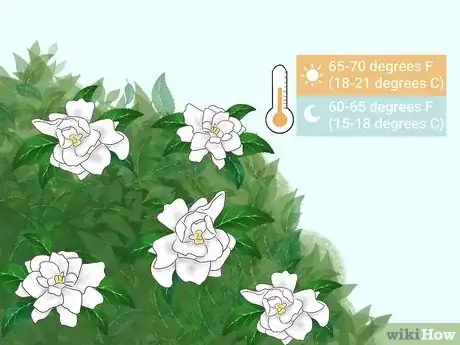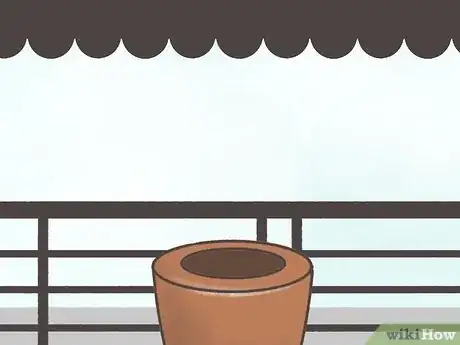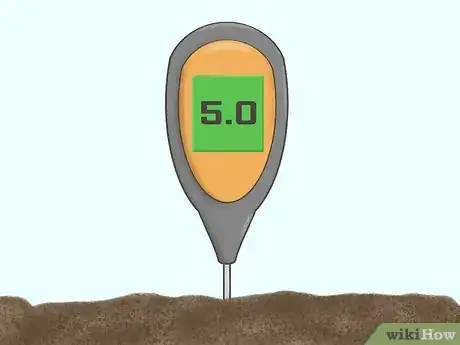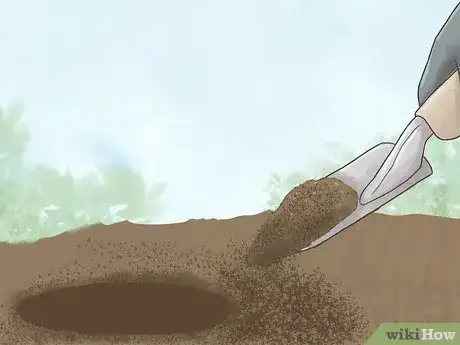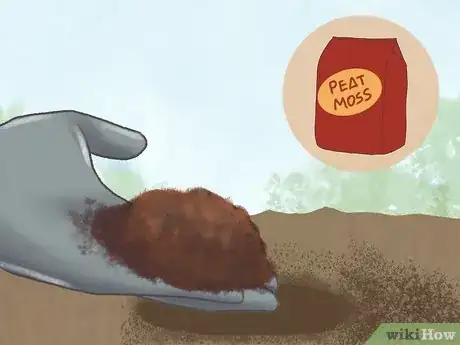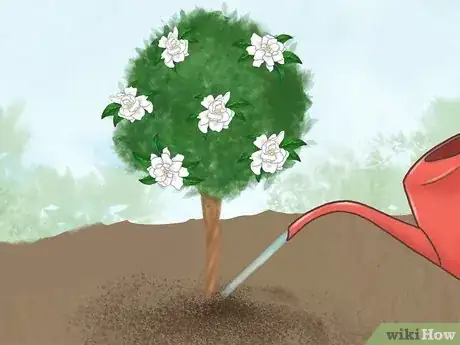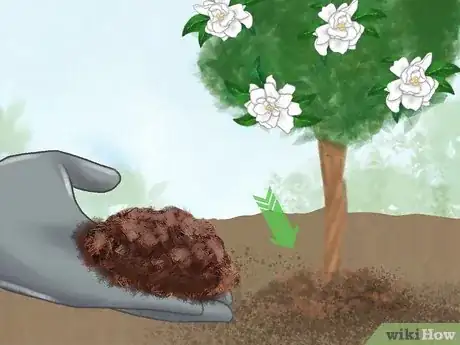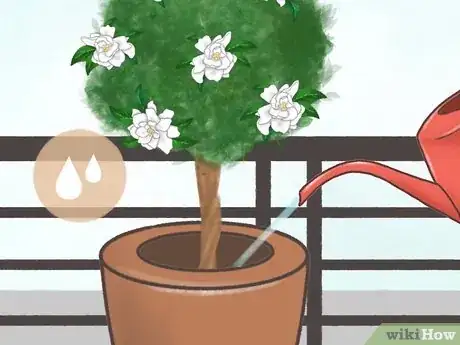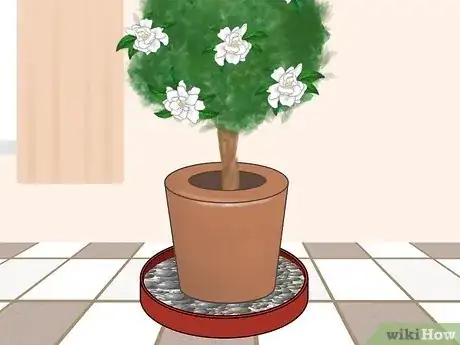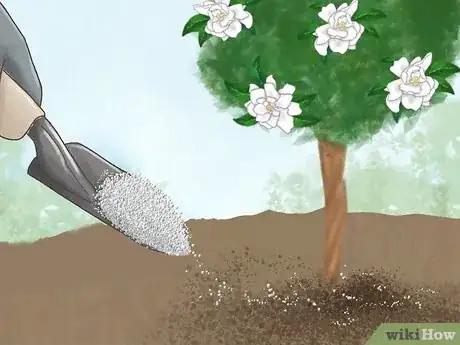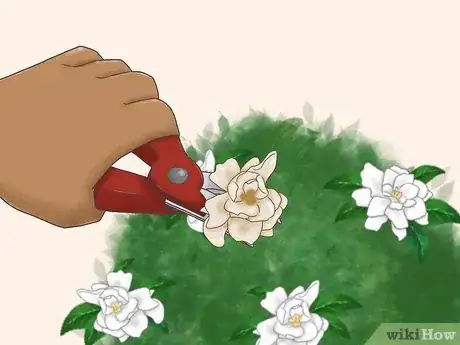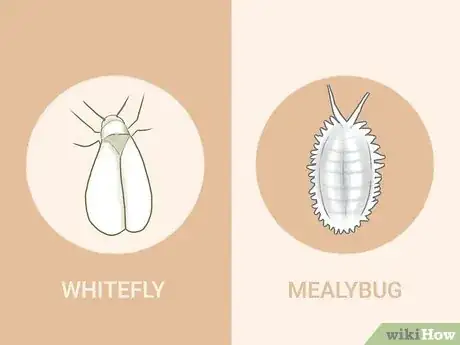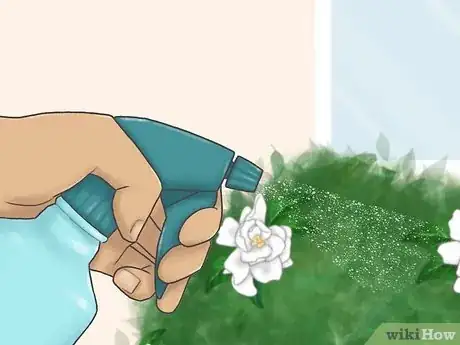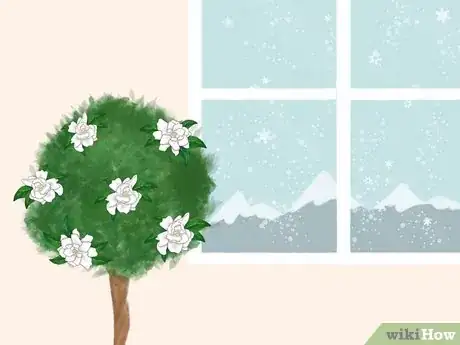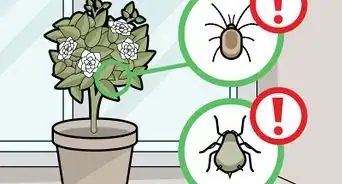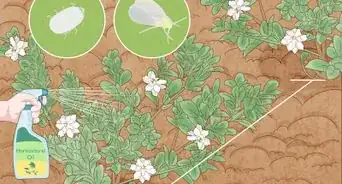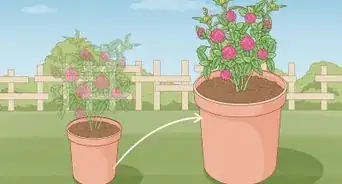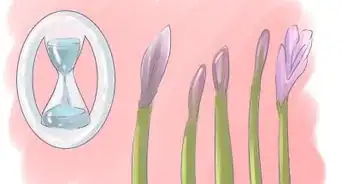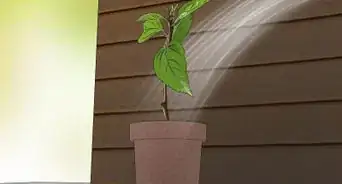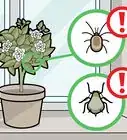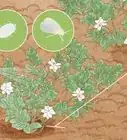This article was co-authored by Lauren Kurtz. Lauren Kurtz is a Naturalist and Horticultural Specialist. Lauren has worked for Aurora, Colorado managing the Water-Wise Garden at Aurora Municipal Center for the Water Conservation Department. She earned a BA in Environmental and Sustainability Studies from Western Michigan University in 2014.
There are 7 references cited in this article, which can be found at the bottom of the page.
This article has been viewed 79,733 times.
Gardenias are beautiful plants with fragrant white flowers and shiny, dark green leaves. Their aromatic blossoms make them a desirable addition to your garden, but they can be difficult to care for. If you properly prep the soil before planting and then maintain the moisture and health of the plant, you can enjoy your gardenia for years to come.
Steps
Planting Your Gardenia
-
1Plant your gardenia in the spring. Gardenias perform best in day temperatures between 65-70 degrees F (18-21 degrees C) and night temperatures between 60-65 degrees F (15-18 degrees C). Since most climates will only see these temperatures in the spring, that’s the best time to plant them to ensure flower buds form.[1]
- If your climate sees colder temperatures in the spring, you may want to wait until late spring to plant. And if your climate is hotter, plant in late winter or early spring.
-
2Select a spot with full sun or light shade. Your gardenia should receive 6-8 hours of full sun a day. If you live somewhere with very hot temperatures, pick a spot with morning sun and afternoon shade so that it doesn’t get scorched.[2]
- Potted gardenias should be placed somewhere with bright light but no direct sunlight. If indoors, try a table beside a bright window. For outside, place it on a bright but shaded deck or balcony.[3]
Advertisement -
3Test your soil for a pH of 5-6. Gardenias like acidic soil, so test the soil where you’d like to plant it. You can use a store-bought probe. If not, you can make the soil more acidic by purchasing sulfur from a home improvement or garden store and adding the amount recommended on the packaging.[4]
- Avoid planting your gardenia near a concrete walk or foundation, since the soil will likely be too alkaline.[5]
-
4Dig a hole as deep as the root ball. Gardenias have shallow roots, so you don’t need to dig it very deep, but make it 2-3 times as wide as the root ball. If you’re planting multiple gardenias, space them at least 3-6 feet (1-2 meters) apart.[6]
-
5Transfer the plant into nutrient-rich soil. Add some organic matter like peat moss, which you can buy at a garden store, or compost, which you can make at home by combining dead plants, food scraps, and water in your backyard. Then place the gardenia in the hole and fill the hole halfway with some of the displaced soil.[7]
-
6Water the roots and fill in the soil. Pour enough water into the hole to saturate the soil. This will help settle the soil and reduce air pockets. Once you see the water drain away, refill the rest of the hole with the remaining soil.[8]
-
7Add mulch around the base. To maintain the moisture in the soil and keep its temperature constant, add 2-4 inches (5-10 cm) of organic mulch around the base of the plant. This may result in excess fertilizer salts in the soil, so water once a month with distilled water to drain them away.[9]
Maintaining Your Gardenia
-
1Keep the soil moist. Gardenias should receive the equivalent of 1 inch (2.5 cm) of rain a week, but you can simply water your gardenia whenever the top inch of soil begins to feel dry. Check the moisture level by sticking your finger down into the soil at the base of the plant. If it feels dry, saturate the soil with water.[10]
-
2Create humidity for an indoor plant. Gardenias need humidity to thrive, so many people mist them regularly with a spray bottle of water. This can lead to fungal infection on the leaves, however, so it’s better to place the pot on a tray filled with pebbles and water. You can also use a humidifier in the same room as an indoor plant to help with moisture.[11]
-
3Fertilize the gardenia every 3-4 weeks. During the growing season, lay acid fertilizer, fish emulsion, or bone meal across the soil at the base of the plant. You generally won’t need to do this from November to February.[12]
-
4Clip faded flowers. Whenever you see your gardenia blooms begin to fade, clip them back to just below the leaf node. This will encourage continuous blooming.[13]
- If you wish to prune the plant down, only do so when the plant is not actively growing in the summer after your plant is finished blooming. This will promote branching and give it a chance to heal for next spring.
-
5Look for whiteflies and mealybugs. These pests can sicken your plants over time so it’s important to spot them early and treat the problem. Whiteflies look like miniature white moths and mealybugs look like tiny cotton balls stuck to the leaves. Check the top and bottoms of leaves as well as the stems for any insects.[14]
-
6Spray infested leaves with an insecticidal soap. If you spot any pests, purchase an insecticidal soap or horticultural oil at a garden store and spray the tops and bottoms of all leaves. Do this 3 times, waiting about a week between each application.[15]
-
7Protect the plant during cold snaps. For cold snaps that produce frost, or throughout the winter months, bring potted gardenias inside. For planted gardenias, cover them with large tarps or blankets, or place a cardboard box over it.[16]
Expert Q&A
Did you know you can get premium answers for this article?
Unlock premium answers by supporting wikiHow
-
QuestionWhat can cause yellow leaves on gardenias?
 Lauren KurtzLauren Kurtz is a Naturalist and Horticultural Specialist. Lauren has worked for Aurora, Colorado managing the Water-Wise Garden at Aurora Municipal Center for the Water Conservation Department. She earned a BA in Environmental and Sustainability Studies from Western Michigan University in 2014.
Lauren KurtzLauren Kurtz is a Naturalist and Horticultural Specialist. Lauren has worked for Aurora, Colorado managing the Water-Wise Garden at Aurora Municipal Center for the Water Conservation Department. She earned a BA in Environmental and Sustainability Studies from Western Michigan University in 2014.
Professional Gardener
-
QuestionWhen is the best time to treat for white flies?
 Lauren KurtzLauren Kurtz is a Naturalist and Horticultural Specialist. Lauren has worked for Aurora, Colorado managing the Water-Wise Garden at Aurora Municipal Center for the Water Conservation Department. She earned a BA in Environmental and Sustainability Studies from Western Michigan University in 2014.
Lauren KurtzLauren Kurtz is a Naturalist and Horticultural Specialist. Lauren has worked for Aurora, Colorado managing the Water-Wise Garden at Aurora Municipal Center for the Water Conservation Department. She earned a BA in Environmental and Sustainability Studies from Western Michigan University in 2014.
Professional Gardener
-
QuestionWhat causes flower buds to brown and die before blooming?
 wikiHow Staff EditorThis answer was written by one of our trained team of researchers who validated it for accuracy and comprehensiveness.
wikiHow Staff EditorThis answer was written by one of our trained team of researchers who validated it for accuracy and comprehensiveness.
Staff Answer wikiHow Staff EditorStaff Answer
wikiHow Staff EditorStaff Answer
Things You'll Need
- Soil
- Acidity tester
- Sulfur
- Peat moss or compost
- Water
- Acid fertilizer, fish emulsion, or bone meal
- Insecticidal soap or horticultural oil
- Tray with pebbles (optional)
References
- ↑ http://www.thegardenhelper.com/gardenia.htm
- ↑ https://www.gardenia.net/guide/learn-how-to-grow-and-care-for-your-gardenia
- ↑ http://www.thegardenhelper.com/gardenia.htm
- ↑ https://garden.org/plants/group/gardenias/
- ↑ https://www.gardenia.net/guide/learn-how-to-grow-and-care-for-your-gardenia
- ↑ https://garden.org/plants/group/gardenias/
- ↑ https://www.gardenia.net/guide/learn-how-to-grow-and-care-for-your-gardenia
- ↑ https://garden.org/plants/group/gardenias/
- ↑ https://www.gardenia.net/guide/learn-how-to-grow-and-care-for-your-gardenia
- ↑ http://balconygardenweb.com/growing-gardenias-in-pots-gardenia-tree-care-and-how-to-grow/
- ↑ http://balconygardenweb.com/growing-gardenias-in-pots-gardenia-tree-care-and-how-to-grow/
- ↑ http://www.southernliving.com/home-garden/gardens/southern-gardening-gardenia
- ↑ https://www.gardenia.net/guide/learn-how-to-grow-and-care-for-your-gardenia
- ↑ http://www.clemson.edu/extension/hgic/pests/plant_pests/shrubs/hgic2059.html
- ↑ http://www.clemson.edu/extension/hgic/pests/plant_pests/shrubs/hgic2059.html
- ↑ http://www.clemson.edu/extension/hgic/plants/landscape/shrubs/hgic1065.html
About This Article
To care for a gardenia, plant it during the spring months in a spot with full sun or light shade. If planting outdoors, dig a hole as deep as the root ball and add mulch around the base of the plant to maintain the moisture in the soil. Indeed, if the soil around your gardenia feels dry, water it to keep the soil moist. Since gardenias also need humidity to thrive, make sure any indoor potted gardenias are in the same room as a humidifier or place the pot on a tray filled with pebbles and water. For more tips from our Horticulturist reviewer, including how to protect your gardenia from cold snaps and pests, keep reading!
